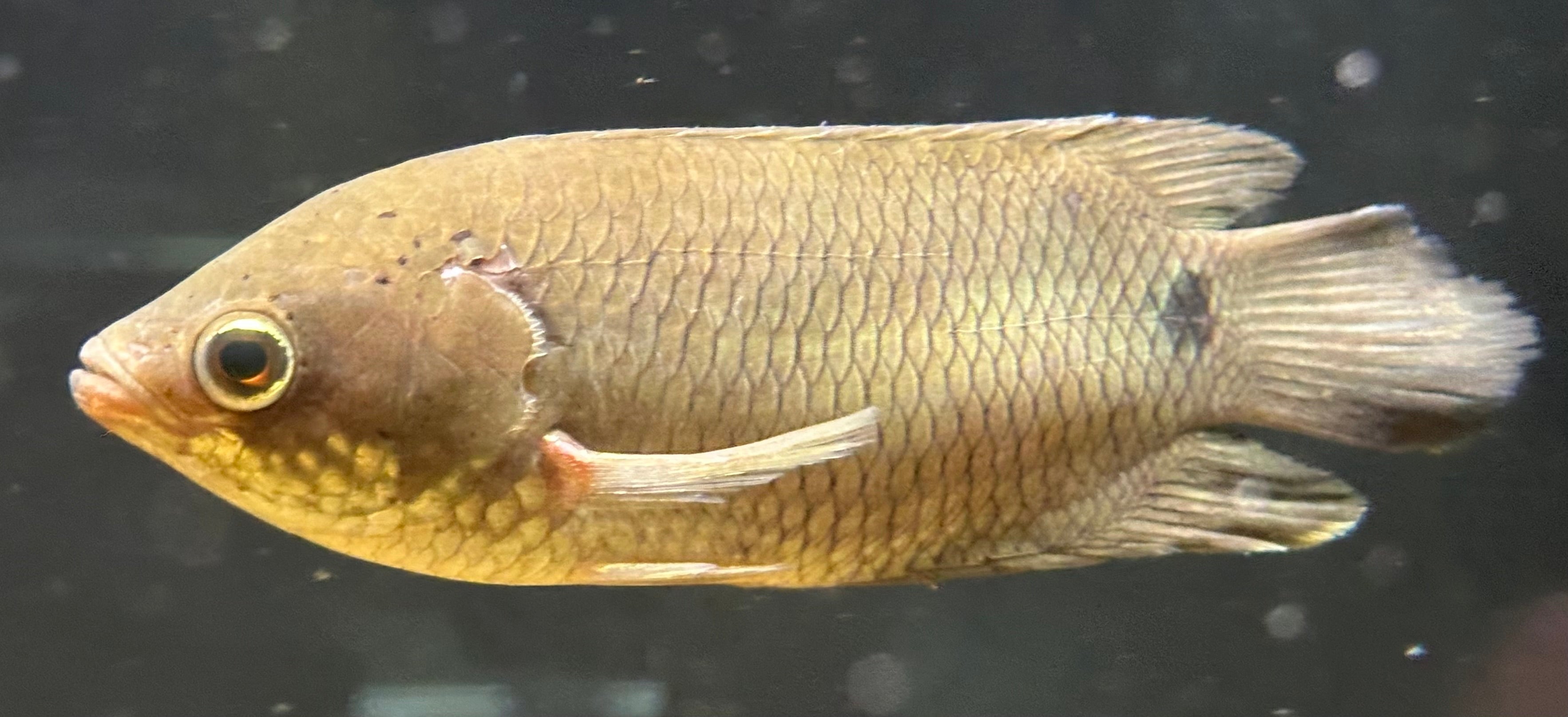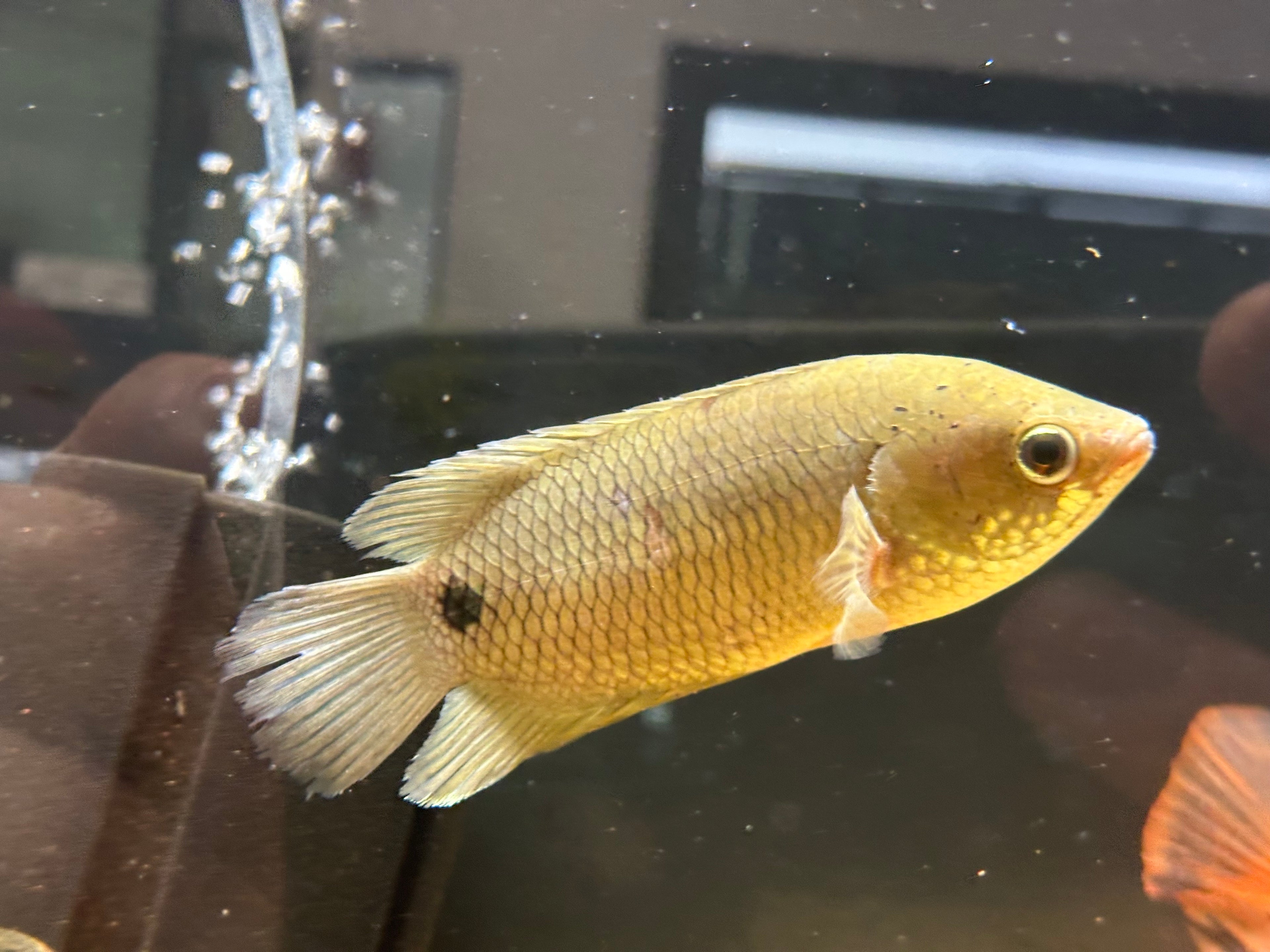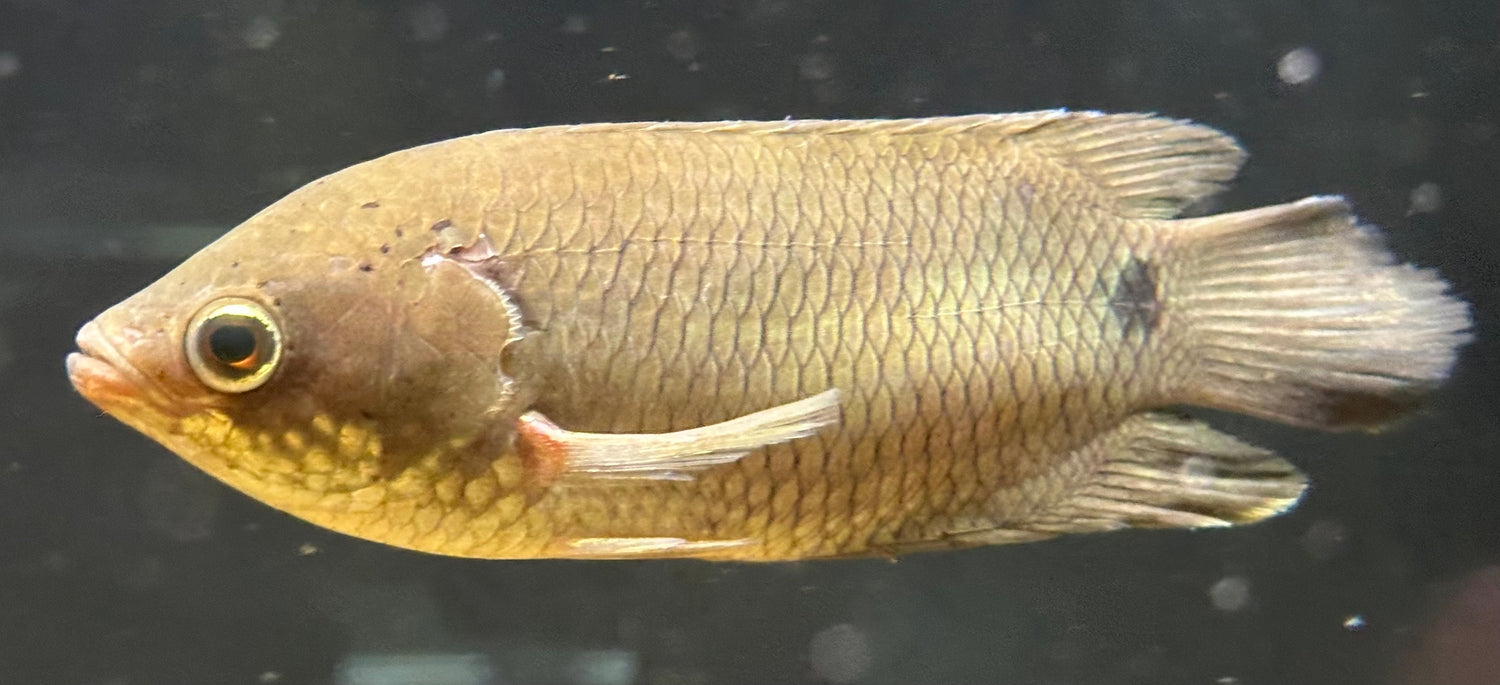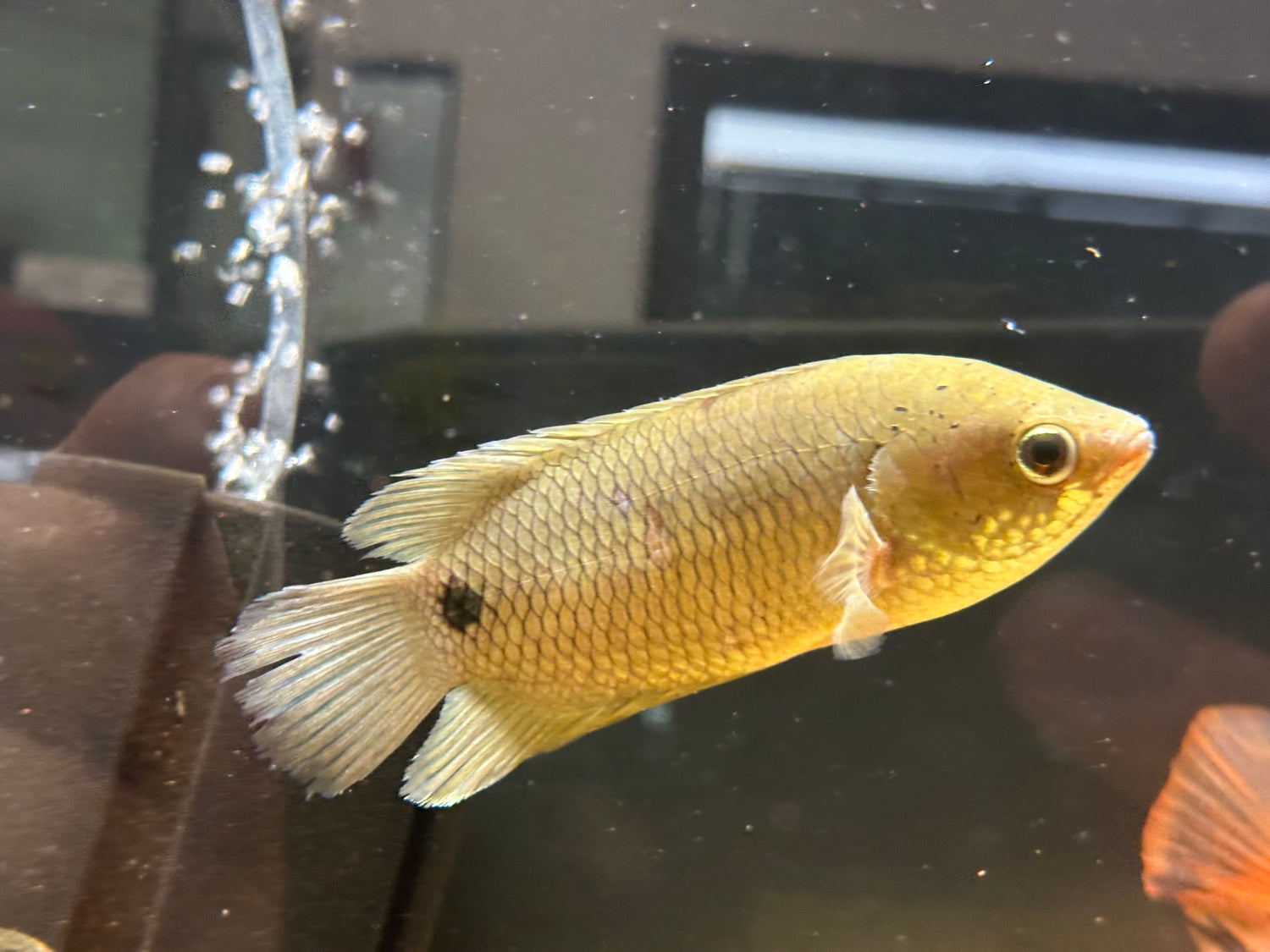Ctenopoma kingsleyae (4”)
- Regular price
-
$35.00 - Regular price
-
- Sale price
-
$35.00
Maximum Size and Lifespan:
Ctenopoma kingsleyae, commonly called the Giant Spotted Ctenopoma, can grow up to 20–25 cm (8–10 inches) in length, making it one of the largest members of its genus. In captivity, with proper care, it may live 8–12 years.
Recommended Aquarium Size, Water Changes, and Water Parameters:
Due to its size and territorial nature, a single adult requires an aquarium of at least 350–400 liters (90–100 gallons). A larger tank is strongly recommended if housing multiple large fish. Provide dim lighting, subdued décor with driftwood, roots, caves, and floating vegetation to replicate its shaded forest stream environment. Perform regular water changes of 25–30% weekly to maintain good water quality.
-
Temperature: 24–28 °C (75–82 °F)
-
pH: 6.0–7.5
Tankmates:
Ctenopoma kingsleyae is a predatory species and will eat any fish small enough to fit into its mouth. Suitable companions include other large, robust species such as larger south/central american cichlids, Synodontis catfish, larger barbs, and polypterus.
Avoid housing with small community fish they will be eaten. Males may be territorial toward each other, so either keep a single specimen or a group in a very large aquarium with plenty of cover.
Diet:
An ambush predator by nature, it feeds on live prey in the wild. In the aquarium it should be offered a varied carnivorous diet.
Offer frozen foods such as shrimp and bloodworms
Many specimens will also adapt to high-quality carnivore pellets and frozen alternatives over time. Regularly varying the diet ensures health and vigor.
Overview:
Ctenopoma kingsleyae is a labyrinth fish, capable of breathing atmospheric air using its labyrinth organ, which allows survival in poorly oxygenated waters. It is admired for its cryptic spotted pattern and predatory behavior, often hiding among plants and roots before striking at prey. Its reclusive nature means it may spend much time lurking, coming out more actively at dusk.
Natural Environment:
Native to Central and West Africa, especially in the Congo Basin and Gabon, C. kingsleyae inhabits slow-moving rivers, swamps, and floodplain streams. These waters are often heavily shaded by forest canopy, with soft acidic water, submerged roots, leaf litter, and dense marginal vegetation.
Breeding:
Breeding in captivity is extremely rare and seldom documented. Like other Ctenopoma, it is an egg-scattering species, releasing eggs among floating vegetation. No parental care is given, and fry are left to fend for themselves. In the wild, spawning usually occurs during rainy seasons when water levels rise and conditions are favorable. Successful captive breeding would require simulating these conditions with warm, soft, slightly acidic water and abundant floating plants, though fry survival rates are generally low.
Couldn't load pickup availability
-
Hurry, only 3 items left in stock!
Share


Ctenopoma kingsleyae (4”)
- Regular price
-
$35.00 - Regular price
-
- Sale price
-
$35.00
What We Promise
-
Quality Without Compromise.
Our #1 priority is our customers, and our fish.
-
All the Stock, All the Time.
We update our online store daily with new items as they become available.
-
Seamless Shipping.
No matter how big or small your order is, we will make scheduling the arrival of your items a breeze.



